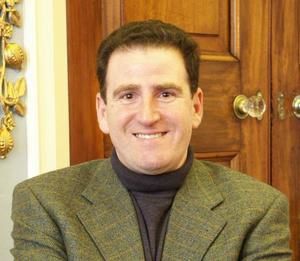ToughStations.org:
Pouring Salt On Climate Critics "Contaminated" WoundsOver at our sister site we've listed some
very strong evidence that heat islands do not impact NASA's surface temperature records. Some of the evidence includes two independent satellite system that show the same temperature trend as the surface stations

and the observation that most of the warming is occurring at the north pole (far away from major cities).

One would think that obvious conclusion is that global warming is real and is not a set of false readings caused by urban heat islands.
Despite this, climate change critics (the word critic does not distinguish between denier and skeptic)
Anthony Watts and
Steve McIntyre have been harshly criticizing the surface record. They've been on a nation wide effort to photograph and critique every surface station in the US. Out of 1,221 surface stations they've already photographed and cataloged 33.09% of them. The stations have been ranked anywhere from class 1 (best) to class 5 which are
described as:
Class 5 (error >= 5C) - Temperature sensor located next to/above an artificial heating source, such a building, roof top, parking lot, or concrete surface."
Professor Eli Rabett recently pointed out that
John V, over at Climate Audit, analyzed the temperature records of the worst stations and the best stations.

As you can see from the picture above NASA's temperature trend (black) matches closely with both the best (red) and the worst (green) temperature stations. It would appear that even the most "
contaminated" stations the climate critics use to refute global warming (whether or not they are actually part of NASA's temperature record) do a surprisingly decent job of reporting temperature trends. Clearly the surface stations are tough little instruments. It is also wise to notice that the best (red) stations match NASA's readings (black) with very high precision.
So I decided to create ToughStations.org to see just how tough these stations are. ToughStations.org will be posting pictures of the class 5 surface stations, their
USHCN identification number,
GHCN identification number and the surfacestations.org official critique/description. Each picture will also come with a link to surfacestations.org so you can see all of the pictures relevant to that station. ToughStations.org will post 10 stations at a time until the original 58 class 5's are all posted. Remember, these are the worst of the worst. Since NASA uses satellite photos to remove stations that are near bright lights I will try and figure out which of these stations (if any) are a part of NASA's official temperature record.
Station #1:28815 TUCSON U OF AZ
Photo not available
Station #241715CHICO UNIV FARM
electronics package within 8" of sensor, asphalt 20'
STO, CHICO UNIVERSITY FARM

For those that can't tell the box in the bottom right is a battery.
Station #341758 -
72290002CHULA VISTA
building/asphalt/vehicles about 3 meters away

Station #4
42910 -
72594000EUREKA WSO
building/asphalt @ 10 & 5 meters away, tree shading

Station #5
43747 -
74702001HANFORD
building/asphalt @ 2 meters away large parking lot

Station #6
43761 -
72597002HAPPY CAMP
building/asphalt/vehicles about 2 meters away

Station #7
43875-
74516006building/asphalt/vehicles about 2 m away, shading
HEALDSBURG FIRE DEPT

Station #8
44713-
74501004LAKE SPAULDING
building 3 meters away, over rock/boat metal tower
The old location of the sensor:

And the new location of the sensor (on the tower)


Station #9
45032-
72492001asphalt about 3 m away, building 10 m
STO, CITY OF LODI

Station #10
45385asphalt 1 m away, buildings with a/c unit 3 m
STO, MARYSVILLE FIRE DEPT


Station #11
46074-
74516003building w/ac unit about 3 meters away, asphalt 2 m
MTR, NAPA STATE HOSPITAL





































